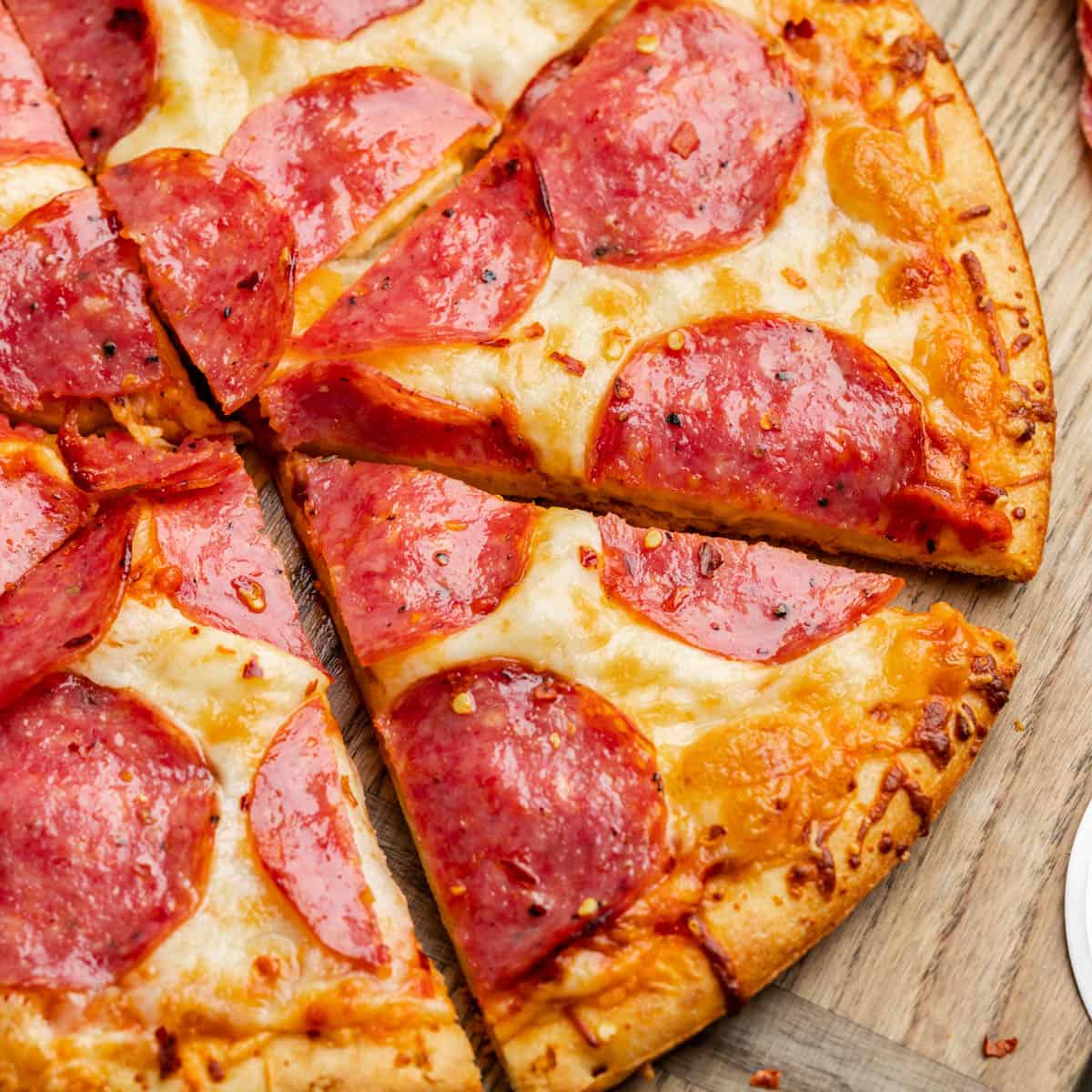Salami pizza is an age-old favorite, brimming with rich flavors and textures that create a symphony in every bite. Hailing from Italian origins but embraced globally, this dish boasts a delicate balance of crunchy crust, tangy sauce, melt-in-the-mouth cheese, and spicy salami. Whether you’re rolling out homemade dough or using store-bought, or spreading homemade sauce or a jarred variety, the key lies in harmonizing these elements. And if you’re aiming for a pizza that stands out, there are countless ways to customize and elevate it to fit your taste.

Ingredient Breakdown & Substitutions
Pizza Dough: Serves as the base of the pizza. It’s responsible for the texture, from soft and chewy to thin and crispy, depending on the preparation.
Substitutions:
- Gluten-Free Dough: For those with gluten sensitivities, a gluten-free blend can be used.
- Cauliflower Crust: For a lower-carb, vegetable-based alternative.
- Pita or Flatbread: For a quick and easy base that requires no preparation.
Pizza Sauce: Acts as a moisture barrier between the dough and the toppings and provides a tangy and rich tomato flavor which complements the other ingredients.
Substitutions:
- Pesto: Offers a herby and nutty taste.
- BBQ Sauce: For a sweet and smoky flavor.
- Alfredo Sauce: For a creamy and rich base.
Mozzarella Cheese: Melts to create a stretchy and gooey layer that holds toppings in place and provides a mild, creamy flavor.
Substitutions:
- Provolone: Has a similar melt but a sharper taste.
- Cheddar: Offers a bolder flavor and a less stretchy melt.
- Plant-Based Cheese: Non-dairy alternative.
Salami: Adds a spicy and slightly fermented flavor profile; its fat content helps to infuse the pizza with rich, savory notes as it cooks.
Substitutions:
- Pepperoni: A classic pizza topping that’s also spicy and savory.
- Ham: A sweeter and less spicy meat option.
- Vegetarian Sausage: Plant-based substitute for a similar texture without the meat.
Frequently Asked Questions
Both can yield delicious results. Homemade dough often provides a fresher taste and can be customized in terms of thickness and texture. However, store-bought is convenient and perfect for quick meals.
Absolutely! You can pair salami with other meats like pepperoni or sausage. But remember, balance is key to ensure every topping shines.
To know when your pizza is done, look for the following signs:
Cheese: The cheese should be fully melted and possibly bubbling, with a slight golden-brown color, especially around the edges.
Crust: Check the edges of the pizza; they should be a deep golden brown, and the bottom of the pizza should be firm and slightly browned when lifted with a spatula or pizza peel.
Toppings: The toppings, particularly salami in this case, should be heated through and appear to have a slightly crispy edge.
Aroma: A fully cooked pizza will give off a delicious, aromatic smell that indicates all the ingredients have combined and cooked together.
Troubleshooting
Soggy Crust
- Solution: Ensure your oven is properly preheated to a high temperature. Use a pizza stone or a preheated baking sheet to get a crispier bottom. Also, avoid overloading the pizza with sauce or toppings, as excess moisture can lead to sogginess.
Dough Won’t Stretch
- Solution: If the dough snaps back when you try to stretch it, it may be overworked or too cold. Let it rest at room temperature for about 30 minutes to relax the gluten, then try stretching it again gently with your hands.
Cheese Isn’t Melting Evenly
- Solution: Shred your cheese evenly and spread it uniformly over the sauce. If the cheese still isn’t melting properly, check that your oven is at the right temperature. It may be beneficial to move the pizza to a higher rack or use the broiler for a short time at the end of cooking.
Toppings Are Undercooked
- Solution: Pre-cook vegetables that have high water content to remove excess moisture. For meats like salami, you may want to pre-cook or brown them if you prefer a crispier texture.
Tips From the Chef
- Cheese Layering: To keep salami from drying out, layer some cheese both below and above the salami slices.
- Handle with Care: Allow your dough to come to room temperature before rolling or stretching. This ensures an even, pliable base for your toppings.
- Avoid Overcrowding: Overloading with too many toppings can result in a soggy crust. Moderation ensures each ingredient shines and the crust stays crisp.

Storage, Freezing & Reheating Instructions
Store any leftover pizza slices in an airtight container in the refrigerator for up to 4 days. For reheating, use an oven or toaster oven at 375°F until the cheese is melted. This ensures the crust remains crisp.
If freezing, individually wrap slices and consume within a month for best flavor. Thaw in the refrigerator before reheating.
More Favorite Pizza Recipes
Deep Dish BBQ Chicken Pizza
40 mins
Chicken Bacon Ranch Pizza
35 mins
French Bread Pizza
25 mins
Margherita Pizza
5 hrs 20 mins






